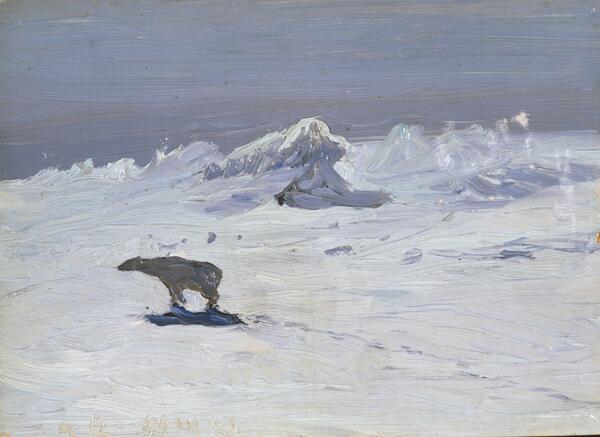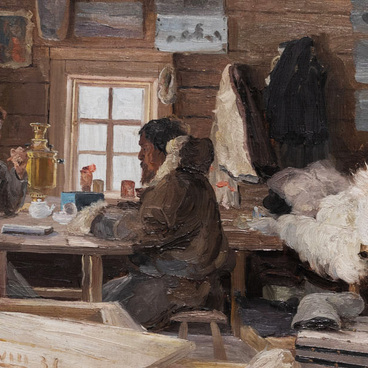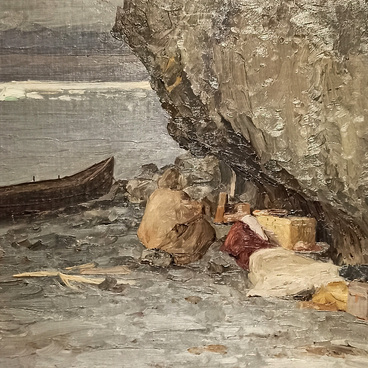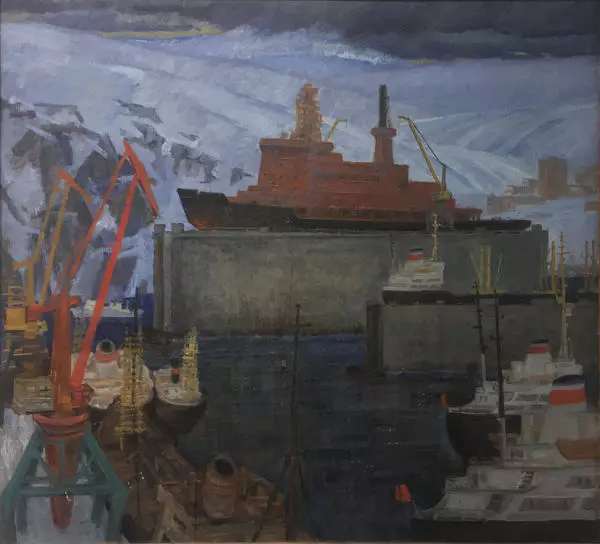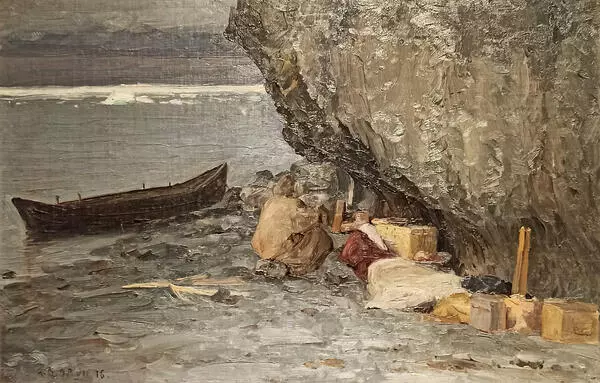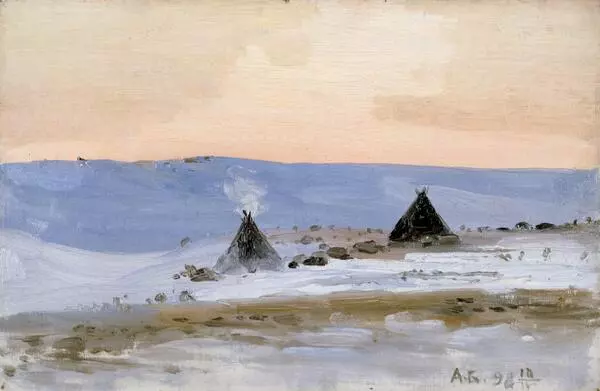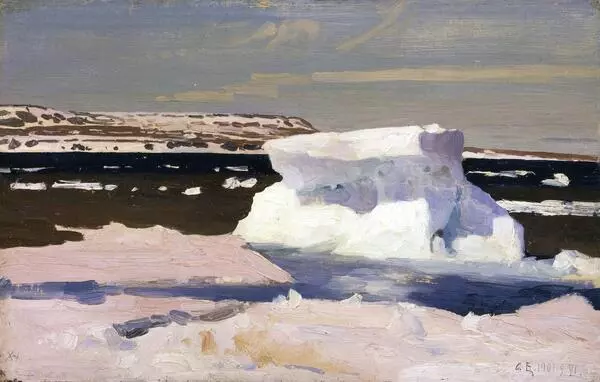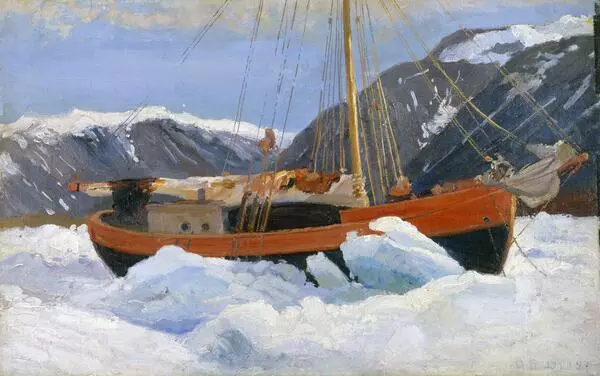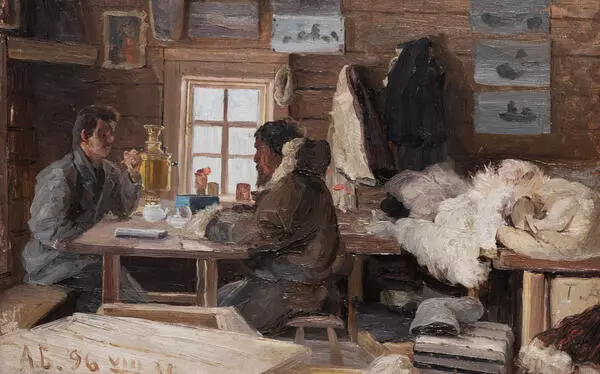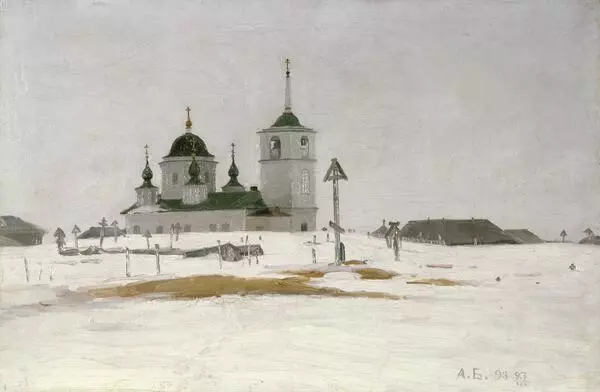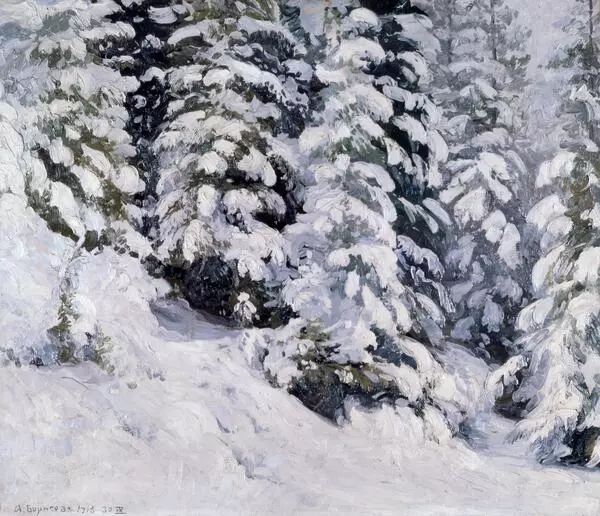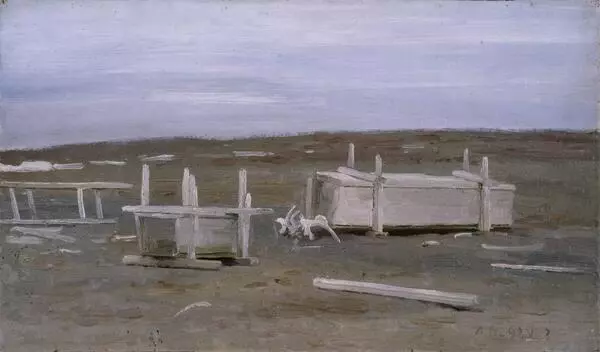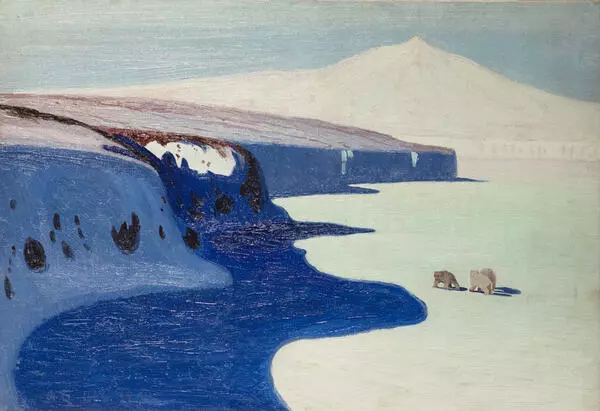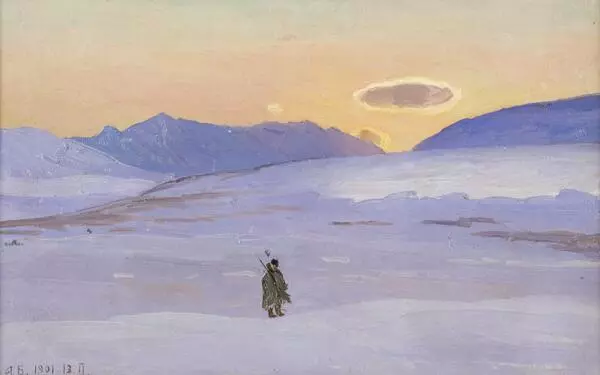In the late autumn of 1899, Alexander Borisov came back to Saint Petersburg after a long Arctic voyage. He was going to work on large canvases, and so the Academy of Arts willingly met his request for a painting studio. But first Borisov set to finishing the most completed of the studies he had brought from Novaya Zemlya.
Moonlit Night. A Hunting Bear is one of them. The cool moonlight gives everything — the sky, the ice blocks, the snow — a dreamlike tone. The palette of this painting is quite common for the artist, who was fond of depicting moonlit and sunlit snow. This canvas might be the most pictorially sophisticated of Borisov’s work. The cool, even moonlight dissipates the shadows, giving the sky an ash-blue hue. The ice rocks shimmer, dissolving in the distance, the snow glistening with blue sparkles. The tracks of a large animal run across it. In the foreground, the master itself, a big polar bear, is standing. It is hungry and so it is on a hunt. Its neck is stretched forward, its nostrils, sniffing the crisp air.
The study is rendered in elegant pearl-blue tones, found in many of Borisov’s works with numerous variations. The only colour accent is the vivid blue figure of the bear, along with its sharp shadow. Apart from the pictorial and compositional values of the picture, the study is enhanced with the artist’s affection towards the motif.
His gaze is not that of a zoologist studying an animal, nor that of a trader wanting to get its precious fur, nor that of a scared traveller who sees it just as a dangerous predator on a hunt. Borisov looks at his subject as an artist who has spent a lot of time watching polar animals and has studied their habits, behaviour and movements. This is why he was able to combine a scientific precision and an artistic affection when depicting the Arctic fauna.
Moonlit Night. A Hunting Bear is one of them. The cool moonlight gives everything — the sky, the ice blocks, the snow — a dreamlike tone. The palette of this painting is quite common for the artist, who was fond of depicting moonlit and sunlit snow. This canvas might be the most pictorially sophisticated of Borisov’s work. The cool, even moonlight dissipates the shadows, giving the sky an ash-blue hue. The ice rocks shimmer, dissolving in the distance, the snow glistening with blue sparkles. The tracks of a large animal run across it. In the foreground, the master itself, a big polar bear, is standing. It is hungry and so it is on a hunt. Its neck is stretched forward, its nostrils, sniffing the crisp air.
The study is rendered in elegant pearl-blue tones, found in many of Borisov’s works with numerous variations. The only colour accent is the vivid blue figure of the bear, along with its sharp shadow. Apart from the pictorial and compositional values of the picture, the study is enhanced with the artist’s affection towards the motif.
His gaze is not that of a zoologist studying an animal, nor that of a trader wanting to get its precious fur, nor that of a scared traveller who sees it just as a dangerous predator on a hunt. Borisov looks at his subject as an artist who has spent a lot of time watching polar animals and has studied their habits, behaviour and movements. This is why he was able to combine a scientific precision and an artistic affection when depicting the Arctic fauna.

